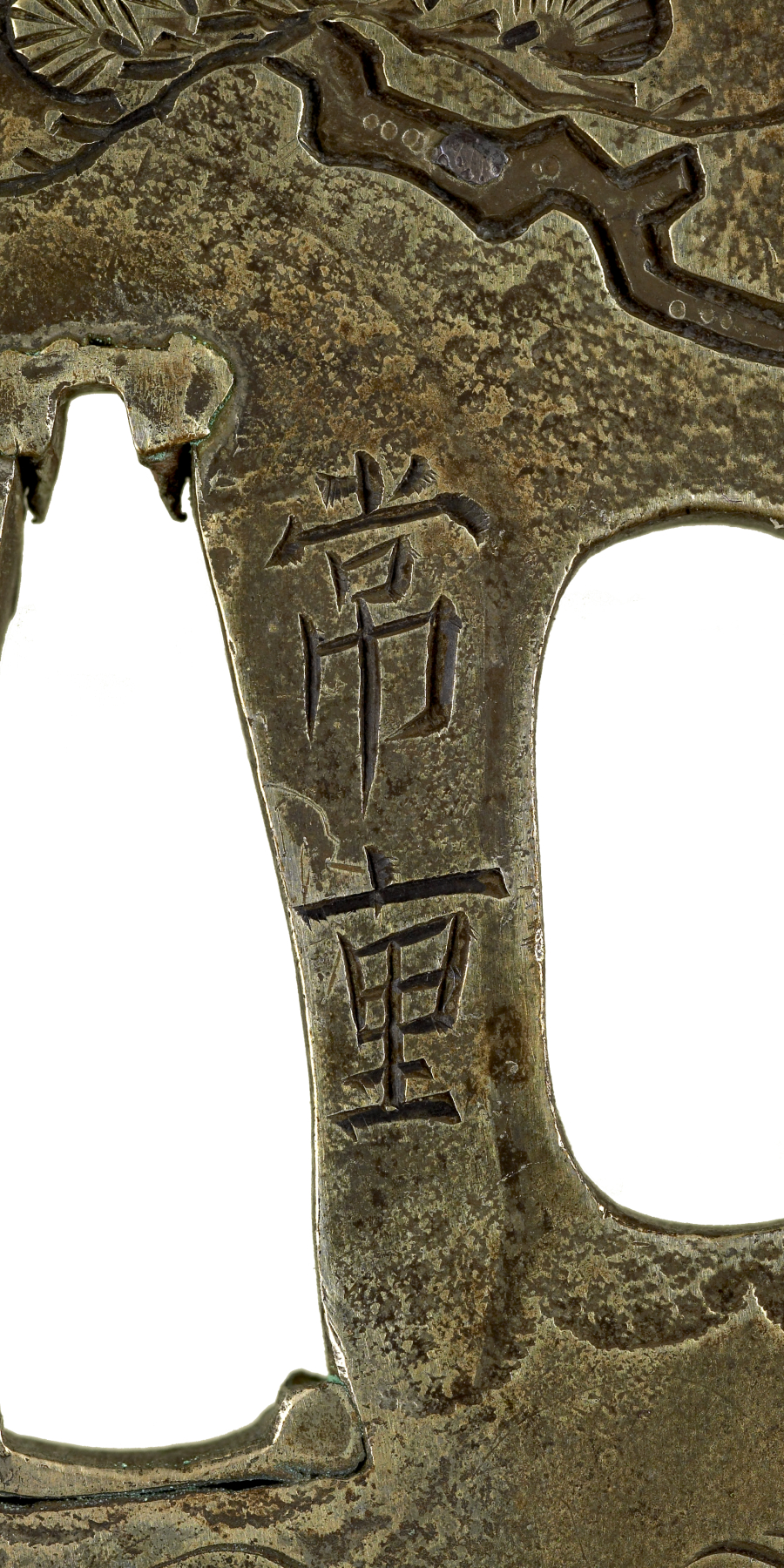Tsuba with the Bell of Dôjôji
(Japanese Military Armor)
The scene depicted is from a story about the bell at the temple Dôjôji. On right are two monks with prayer beads in the act of praying. At the left, the large bell of the temple is shown fallen from its tower. A jealous woman transformed into a dragon while chasing a monk she thought had promised to marry her. The monks of Dôjôji hid the monk in the bell tower. The bell fell, trapping him under it. The woman, in her dragon form, coiled her body around the bell and breathed flames on it. This killed the monk trapped inside. The story is retold in noh and kabuki plays of the same name. In the plays, a dancer comes to the temple to celebrate the installation of a new bell. She dances under the bell and when it falls on her is transformed into the dragon. A pine tree and stream are shown on the reverse.
Inscription
Provenance
Provenance (from the French provenir, 'to come from/forth') is the chronology of the ownership, custody, or location of a historical object. Learn more about provenance at the Walters.
Henry Walters, Baltimore [date and mode of acquisition unknown]; Walters Art Museum, 1931, by bequest.
Geographies
Japan, Tokyo (Edo) (Place of Origin)
Measurements
2 13/16 x 2 5/8 x 3/16 in. (7.13 x 6.64 x 0.5 cm)
Credit Line
Acquired by Henry Walters
Location in Museum
Not on view
Accession Number
In libraries, galleries, museums, and archives, an accession number is a unique identifier assigned to each object in the collection.
In libraries, galleries, museums, and archives, an accession number is a unique identifier assigned to each object in the collection.
51.341






